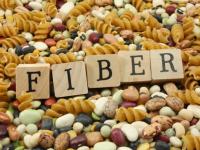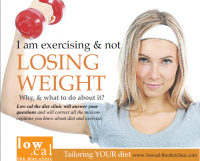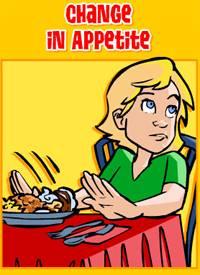Your Diet during Ramadan fasting
PDF :
Your Diet during Ramadan fasting
The month of Ramadan is not only a spiritual holy month calling for abstinence from food and drink, but it also urges individuals to abide to good nutritional behavior and helps them overcome health and mental problems.
Fasting Ramadan has a positive spiritual, physical, psychological and social effect, but individual’s habits and actions such as over-eating and lack of sleep in this holy month can lead to some health problems in the event of non-compliance with some of the points that will be mentioned later.
Actually the dietary guidelines to be followed in the month of fasting don’t differ much from other months.
Moderation, balance and variety:
Don’t increase calories: There’s no need to eat excessively at iftar or suhoor as the body has energy reserved and the metabolism slows down. Moreover, research has shown that eating a nutritious low calorie, but balanced (i.e., containing all categories of food) is sufficient to maintain good energy level and activity during the month of fasting.
Shoor:
1 Cup skimmed milk + Nescafe no sugar or 1 cup fat free yogurt + 1 fruit
N.B: 1 cup skimmed milk = 6 tsp cofffeemate fat free, but better to take milk which is rich in calcium& proteins instead of coffeemate which is rich in additives, chemicals and bleaching agents
+ choose one item from each column below
|
1 carbohydrate (whole grain) (80kcal)
|
1 protein (low fat or fat free) (55kcal)
|
1 fat (45kcal)
|
|
30g rye bread (wasa bread)
Or
30g of bran rich Arabic bread
Or
25g whole wheat french bread
Or
3 cracottes
Or
½ manouche zaatar (omit fat)
Or
½ cup legumes (foul, hommos, adas) + 1 small loaf of brown Arabic bread
|
2 Tbsp labneh fat free
Or
3 slices of white low fat cheese
Or
2 slices turkey (or 1 turkey slice + 1 cheese slice)
Or
1 egg
Or
2 picon light
|
5 olives (avoid olives in case you have high blood pressure)
Or
1 tsp olive oil
Or
1 tsp mayo light
Or
5 walnuts
|
P.S: You can have vegetables as much as you want (example one tomato +2-3 cucumbers, also add mint which was shown to control appetite levels).
Iftar:
-Dates and juice:
Breaking the fast on dates is advisable since dates contain sugar directly available to the organism in addition to fiber, potassium, and magnesium, which help restore blood sugar level to normal and nourish all cells, especially brain cells and nerves. Better stick to one date (20 cal).
This also applies to a glass of fresh juice, especially fresh orange juice (120 cal).
Make sure the juice is fresh as juices tend to lose their content of vitamin C with time.
-Soup:
During the long day of fasting the organism has lost quite a lot of its minerals especially through sweating in this hot weather. Having soup is essential in rebalancing electrolytes in the body.
We advise mostly to having vegetable soup.
Vegetable soup contains fiber which is very important for the digestive system, vitamin A, beta carotene, and many of the “phytochemicals”, antioxidants that help resist cancer, heart disease and other diseases thus helping in rebalancing electrolytes level.
Preparing soups that are low in fat and calories is simple. Just make sure to avoid adding oil or other fatty substances such as meat broth or chicken broth. As for creamy soups, substitute the cream with skimmed milk and add herbs or spices freely to compensate for the lack of fatty substances.
-Salad (fattoush):
Fattoush is a very important course because it contains different types of vegetables that are mostly dark colored hence a symphony of vitamins and minerals that play a role in fighting many diseases such as bowel cancer, cholesterol, triglycerides, diabetes, as well as it aids in weight loss especially due to high fiber content. What usually increase the calorie content of this healthy dish is the excessive addition of olive oil to it as well as fried bread crumbs.
Although olive oil is rich in omega- 3, it is preferred not to exceed a teaspoon of olive oil per person. Just like any other oil, olive oil is energy dense (1 teaspoon is equivalent to 45 kcal). Also some people like to add pomegranate paste. Know that each tablespoon contain 40 kcal.
We also advise not to add any bread to fattoush.
As for other salads a low fat dressing can be prepared by adding vinegar, light mayonnaise, mustard, spices & herbs. Add water for dilution.
-Appetizers
For people on weight loss regimen better to opt for appetizers that is rich in proteins also in vegetables. Example: omlette prepared with very little oil, kibbi rounds baked in oven, legumes like mdardara or mjaddara, green bean in oil or okra or chicory.
Again cooking should be done with minimal oil.
When it comes to appetizers rich in carbohydrates like pizza, rkakat, or samboussak opt for 1 maximum and try to prepare it baked not fried.
French fries are better banned from your Ramadan menu that if you want to lose weight and keep healthy eating habits. (A portion of 10 fries is equivalent to 1 carbohydrate 80 cal + 1 fat 45 Cal)
-Main dish
Variety, portion control and method of cooking are crucial for those who want to lose weight.
· Stews: three times a week.
Lebanese stews are considered low in calories, especially when the cooking method is healthy. They also provide a variety from the food groups i.e. they provide vegetables, starches (rice or potatoes) and meat (preferably replace the lamb meat which is rich in saturated fat with calf meat and opt for white meat such as skinless chicken breast).This meal is quite satisfactory as portion of vegetable however beware for the portion of starch. 1 – 1.5 cup is advised.
List of starch: rice (brown is better), burghol (parboiled wheat), freek, quinoa, lentils, pasta, potato, burger bun whole wheat remove inside, legumes and seeds.
· Fish (twice a week)
Fish is the best type of proteins because it is low in fat and contains omega-3 fatty acids which provide a protective effect against cardiovascular diseases. Fish also contains iodine. Grill the fish and add a little oil instead of frying.
· Grains and legumes:
Chickpeas, lentils, and beans are rich in fiber, protein, and various minerals. They are considered as carbohydrates. Hence we should be aware of the portion served.
· Pasta
Pasta provides a good source of energy. It is advisable to be moderate in quantity and to add red sauce instead of butter and cream.
So: KEYWORDS for a healthy iftar.
-cooking light.
-Controlling portion of carbohydrates.
-Eating Proteins especially the healthy ones.
-Enriching our meals with fibers from vegetables.
-Including low fat yoghurt.
Sweets:
After iftar comes the real problem. The holy month of Ramadan is associated with Arabic sweets and here lies the main problem.
Sweets in general, especially Arabic sweets, are rich in ghee, sugar, cream, full fat milk, and often fried making them high in calories and fat, especially saturated fat. Saturated fats are harmful for those who are suffering from cardiovascular diseases, high blood cholesterol, diabetes, as well as for people who are on a diet. When you can’t resist the temptations, you must remember that the first bite is the most pleasurable and do not rely on the sweets for satiety but for pleasure which is only and always satisfied in the first bite.
-Preparation of sweets
To prepare sweets at home in a healthy way you have to avoid the use of butter and replace it with oil (preferably canola oil which is rich in omega-3 fatty acid). The amount of 1/2 cup of oil for the whole cake.
Here is a table on the amount of calories per 1 cup of Arabic juices:
|
Juices
|
Calories
|
|
Sharab tamr hindi
|
110
|
|
Sharab el sous
|
258
|
|
Sharab el tout
|
110
|
|
Jellab
|
110
|
|
Qamar al deen
|
150
|
Here is a table on the amount of calories per 100g of Arabic desserts:
|
Arabic desserts
|
Calories
|
|
Baklava
|
540
|
|
Mafroukeh
|
360
|
|
Osmaliyye
|
370
|
|
Znood il sit
|
372
|
|
Knefe bi ashta
|
345
|
|
Knefe bi jibin
|
356
|
|
Halawit il jibin
|
309
|
Holidays with fewer calories!
How can you avoid gaining those extra kgs during the holiday period especially when family and social gatherings often meet around a table full of fatty cuisine rich in calories that encourages over-indulging . Dietitian Lana Fayed Arayssi offers a range of tips in this regard, focusing on the importance of exercise during this period (and always) in order to burn these excess calories besides eating wisely.
A set of reliable statistics have shown that the rate of weight gain in the holiday period could sum up to two kilograms. This increase is easily achieved due to the consumption of foods which are usually high in fat such as butter, cream, mayonnaise, sweets, fried items and nuts, which are automatically converted to fat. This is also accompanied by increased blood levels of cholesterol and triglycerides. An additional consumption of 3600 calories per week would lead to an increase of 400 g of fat and this is easily achievable during holidays if dietary rules were neglected since a medium piece of Buche or maamoul provides about 500 calories.
The best ways to cope with the temptations is to exercise enthusiastically, or to increase your physical activity as follows:
• Exercise for half an hour till one hour daily when time and ability are available.
• Rely on walking to do your daily activities. Walk to work, preferably brisk walking to burn more calories. Walking for 40 minutes burns around 250 calories.
• Park father than your intended destination to walk more.
• Use the stairs instead of the elevator.
• Do housework chores instead of lying down. You can burn up to 250 calories.
As for the day of Eid, here are some guidelines on how to stay healthy:
1 - The day of Eid:
- Don’t skip your breakfast. Have a healthy and balanced breakfast which includes a source of carbohydrates for energy, low fat and calcium rich proteins, vegetables such as tomato, cucumber, mint, and thyme that are rich in fiber, vitamins and minerals, in addition to a glass of skimmed milk or yogurt.
- Don’t skip your lunch in favor for having dinner. Instead, focus on having a healthy and light meal.
- Avoid going hungry to the dinner. Have a light snack such as a salad or a small sandwich.
- Do not starve yourself before or after eid to compensate for the excess calories consumed. The most appropriate solution in this case is to increase your exercise in order to burn more.
2- When eating keep in mind the following:
- Stay away from nuts and snacks that are rich in calories and substitute them with carrots, cucumbers, cauliflower and broccoli which are usually offered at the beginning of evening.
- Start with a salad seasoned with vinegar or lemon instead of mayonnaise.
- Eat a large share of vegetables (steamed, cooked, or boiled) with the main dish.
- Choose grilled fish such as salmon, tuna or shrimps for their nutritional benefits.
- Remove skins of turkey and chicken since they are high in saturated fat.
- Avoid excessive intake of sweets and remember that first bite is the most pleasurable. So enjoy it and stick to this one bite if possible.
- Choose fresh fruit salad for dessert.
- Avoid sitting after eating. Go for a walk, or perform any form of physical activity to limit the accumulation of fat, especially around the hips.
Low calories sauces and dressings from lowcal:
1- Béchamel sauce:
Ingredients:
- 2 Cups of skimmed milk powder
- 1 cup of cornstarch
- 8-9 glasses of water
- Salt, white pepper, and a pinch of nutmeg.
Preparation:
Mix the water, milk and cornstarch in a large bowl using a whisk over low heat until boiling. Then season with salt, pepper, and nutmeg.
2- Lowcal salad dressing (for two persons provides around 25 calories per person):
Ingredients:
- A spoonful of diet mayonnaise
- 1 teaspoon of mustard Moutarde de Dijon
- 1 tablespoon of vinegar
- Two tablespoons of water
3- Caesar dressing:
Add the garlic to the amounts mentioned in the previous and replace vinegar with lemon juice.
4- Cocktail dressing:
Add some ketchup and paprika to the amounts specified in the Low Cal dressing.
















